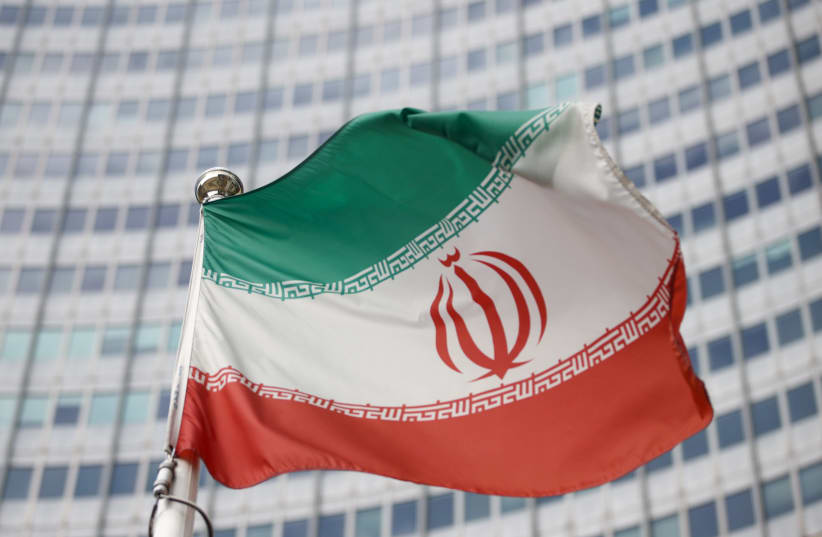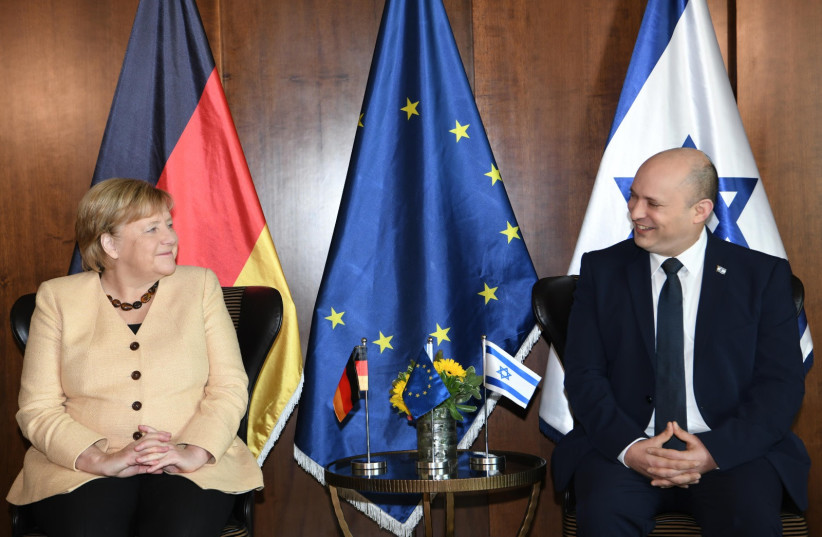Iran has less foreign support for its nefarious activities than in the past – and it is not close to acquiring a nuclear weapon. These were two key takeaways from former Mossad director Yossi Cohen’s comments this week at the Jerusalem Post Annual Conference.
“I think that Iran, to this day, is not even close to acquiring a nuclear weapon,” he said. “This is due to long-standing efforts by some forces in the world.”
The fact that Iran may not be close to a nuclear device appears to contradict statements that Prime Minister Naftali Bennett has made and which former prime minister Benjamin Netanyahu often made as well.
“Iran’s nuclear program is at the most advanced point ever,” Bennett said at a joint press conference with German Chancellor Angela Merkel on October 10. “The world waits, the Iranians delay and the centrifuges spin.”
Bennett and Netanyahu aren’t the only ones who frequently claim Iran is closer than in the past to a nuclear weapon. Back in July, former IDF chief of staff Gadi Eisenkot said that Iran is nearer than ever to producing a nuclear weapon, according to reports.
If the Israeli statements are confusing, then one can also turn to Iran and its own statements to see what’s going on. Iran recently claimed to have 120 kg. of 20% enriched uranium. This could be 80% of the material needed for a weapon, reports said.
“According to the Jewish Institute for National Security of America, 155 kg. of 20%-enriched uranium would be enough to eventually be scaled up to weaponized uranium for a nuclear bomb,” The Jerusalem Post reported on October 10.
It’s worth noting here that Defense Minister Benny Gantz also discussed the Iran nuclear program at this week’s conference.
“Israel is one of the only countries in the world that is still under constant existential threat – with Iran at the top of our agenda. We have developed technological and operational tools that will guarantee our security against Iran’s nuclear ambitions,” he said.
“Iran aims to become a regional hegemon and tyrant,” Gantz said. “Iran is pursuing a nuclear weapon, while operating its proxies to conduct violent attacks, disrupt international trade and undermine regional peace.”
This week Bennett also warned about Iran’s proxies. “Iran, which has dispatched proxies and built armies to surround the State of Israel, aspires to build yet another army on the border of the Golan Heights,” he said on October 11.
THE REALITY that can be gleaned from these comments by key figures in Israel is that Iran is closer to a nuclear weapon, but that it is still very far from actually building the weapon and testing it, and that Iran’s real threat is the proxies that it has deployed across the region.
This illustrates that Iran’s nuclear enrichment may have a dual purpose. On the one hand, Iran can keep enriching uranium, slowly inching toward enough material to build a weapon, but it can also use this for diplomatic leverage.
The Islamic Republic has learned over the past decade that its nuclear activity is actually more beneficial on the diplomatic front – wringing concessions from the West and using enrichment as blackmail – than the practicality of actually having a nuclear bomb. What’s the point of actually building a bomb and then needing to test it? That might annoy Tehran’s friends in Moscow and its new and emerging work with China.
If Iran actually built or tested a weapon, it would accelerate a nuclear arms race in the region, as other countries – from Turkey to Saudi Arabia – might scramble to build their own devices.
IRAN HAS a complex network of nuclear facilities that are part of its program. Iran can therefore do work on its project at Natanz, Fordow, Bushehr, Arak and other places.
Tehran also has secretive missile facilities, such as those run by the Shahid Hammat group and at the Khojir site.
Israel has also revealed the Iran drone base at Kashan, which plays a key role in Iran’s regional threats. Iran exports drone technology to Yemen, Lebanon and Gaza and sends actual drones to Iraq and Syria.
Meanwhile, Iran has also rapidly increased the power of its proxies and the militias it backs in Iraq and Syria during the last several years. It also moved ballistic missiles to Iraq in 2018 and 2019, according to reports. It carried out drone attacks on Israel in February 2018 and May 2021. It has infiltrated the Deir al-Zor region of Syria, while maintaining facilities at Syria’s T-4 base.
Iran’s supply of technology to the Houthis in Yemen has enabled them, since 2016, to increase the range of missiles and drones to the extent that they threaten Saudi Arabia and the Gulf, including shipping lanes and even Israel.
Since 2018, Tehran has also sought to increase its entrenchment near the Golan, after the Syrian regime defeated rebels in that area. The BBC reported that satellite images revealed an Iranian base at Al Kiswah, south of Damascus, in November 2017.
Israel has carried out airstrikes against Iranian targets in Syria, according to comments by former IAF head Amir Eshel in 2017, and Eisenkot in January 2019. Iranian proxies in Iraq accused Israel of airstrikes in 2019 as well. This points to a larger picture of IAF attempts to prevent Iranian entrenchment in Syria.
In addition, Israel has warned about precision-guided munitions being trafficked from Iran to Hezbollah.
The most recent reports in Syria about airstrikes occurred on October 9, claiming that airstrikes targeted the T-4 base, killing at least two foreign fighters.
GIVEN ALL this information, it is worth concluding that the Iranian threat to the region is mostly embodied by its support for proxies in Yemen, Iraq, Syria, Lebanon and Gaza. Tehran has a nuclear program, and it uses enrichment to try to get concessions from the West.
The recent death of A. Q. Khan, the Pakistani scientist who became a key figure in not only Pakistan’s nuclear program but also for trafficking nuclear technology, may be a lesson for Iran. Whereas Iran’s Mohsen Fakhrizadeh, a nuclear physicist and scientist, was assassinated, Khan survived to old age.
But what did the bomb actually bring Pakistan? It didn’t bring Pakistan wealth or power. Iran may see the failure of Pakistan to get much for its bomb as a reason never to fully develop one. North Korea, for instance, has nuclear abilities but doesn’t get much. Like Iran, North Korea also uses weapons to try to blackmail its neighboring enemy South Korea.
Iran may be happy to be forever on the brink of a nuclear weapon. This enables it to continue spinning centrifuges and inch closer and closer to one, while its real power rests in its militias and its exportation of technology to groups like Hamas, Hezbollah, the Houthis and the Hashd al-Shaabi (Popular Mobilization Forces) in Iraq.
The comments by Israeli leaders such as Gantz and Bennett, as well as former officials like Cohen, show that Iran’s program has threatening aspects as well as setbacks. They also reveal that there is agreement about the threat of Iran’s proxies – and that this is where Israel’s concerns are focused.

